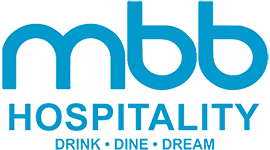
Food costing is one of the most stressful aspects of managing your restaurant’s profitability because it’s based on so many variables. Doing the proper research into certain aspects of the market and managing your inventory consistently can help you find the right food costing solutions to your restaurant’s profit margins.
How do you do that? Here are 5 food costing solutions that are popular among restaurant managers as solutions to problems of profitability.
1. Keep track of the food market
There are statistics available that track food prices over time, which will tell you whether fruit or veal is predicted to increase or decrease in price in the coming months. These stats should be a tool in your arsenal when you price your items.
While such market pricing offers no guarantees, these predictive measures can help you price food accordingly and get your food costs into a consistently accurate range of profitability. Being completely in the dark about the prices of ingredients on the current market can lead to disastrous over or under-pricing that affects your revenue.
You can also use this information to plan ahead. By knowing ahead of time that the price of veal is on the rise, for instance, you can shuffle your recipes and specials, or find alternative ingredients that offer a more attractive profit margin on the current food market.
2. Ditch premade food
Premade food is convenient for you and your chefs. You don’t have to be Gordon Ramsay to know that prepackaged, frozen food isn’t going to deliver you the best flavor. However, there’s more to giving up premade food than just taste.
Premade food affects your profit margins: a frozen pizza dough with packaged toppings will cost more than playing the prices on market availability for toppings that are in season and making your own dough out of basic ingredients.
Of course, giving up premade food means that your chefs will have to do more prep work, but there are advantages in almost every food category to doing this. You can use fruits that are in season and take advantage of low prices. You can carve meat yourself and use the leftovers in sauces and broths.
These strategies not only give you more freshly made food that tastes better, but they will give you advantageous food costing solutions as well.
3. Portions and waste
This tip comes down to pre-planning and training. Your menu could be wasting more money on food costs than you realize by piling too many ingredients on the plate or calling for too large a portion.
If you’re having a food costing problem, instead of raising your prices and potentially affecting your customer base, consider altering your menu at the same prices instead.
Employee training also plays a part in food portioning and waste management. When food gets burned in the kitchen or slopped on the counter, or extra dishes get made that need to be thrown away, that lack of training has become a drain on your revenue.
Trained kitchen staff knows how to make the most of ingredients, portion correctly, and not waste anything. If you’re having a food costing problem, you may want to train or replace your staff.
4. Inventory management
Inventory management is key to creating actionable food costing solutions that improve your restaurant. There are several aspects to keeping a proper inventory.
The first is installing a state-of-the-art POS system, which helps modern restaurants manage their orders with their vendors, track prices, and change specials and recipes all from one database. You can control these aspects of your restaurant even across multiple locations from one iPad with the right POS system.
There are still manual aspects of inventory management, however.
If you know that certain ingredients are spoiling, you could be ordering too much and causing your profit margins to fall. You may need to program or arrange multiple deliveries or change the ingredient altogether to prevent spoilage.
Additionally, if you’re running out of food during busy dinner services, that could adversely affect food costing as well since it could result in comped meals for customers who had to wait for food that you don’t have.
5. Know your products
Different products – this is especially true of produce – have different quality standards depending on the quality of the farm they’re from, when they were picked, and how long they’ve been on the shelf. This means that when you’re buying produce in bulk, the quality could make a huge difference in food costs.
The solution isn’t as simple as always getting the highest-grade produce when you have the money to spend. For some produce in some situations, it may not matter. You may be able to save money without reducing the quality of your products.
Let’s use tomatoes as an example. Tomatoes may have a quality grade based on their taste that changes how much they cost. The best tomatoes might be overkill in a sauce, when any will do just as well, but necessary to give you the best-tasting menu item when it comes to salads.
Knowing your produce allows you to make these calls and assemble an inventory of ingredients that maximizes your profit margins compared to your food costs.
The Takeaway
Food costing solutions are necessary in order to maximize the revenue of your restaurants. Their importance is exponential if you manage multiple locations.
The best way to manage restaurant food costs is to take a multi-step approach to your food orders. This includes a POS system to keep track of inventory and prices, a knowledge of food price predictions that helps you plan your menu accordingly, an awareness of differences in food quality, and strict management of inventory and portions to prevent waste.
This is the legwork required to maximize your revenue when it comes to food costs. It may be hard at first, but these solutions will result in fresher food for your customers and better profit margins for you.


Leave a Reply